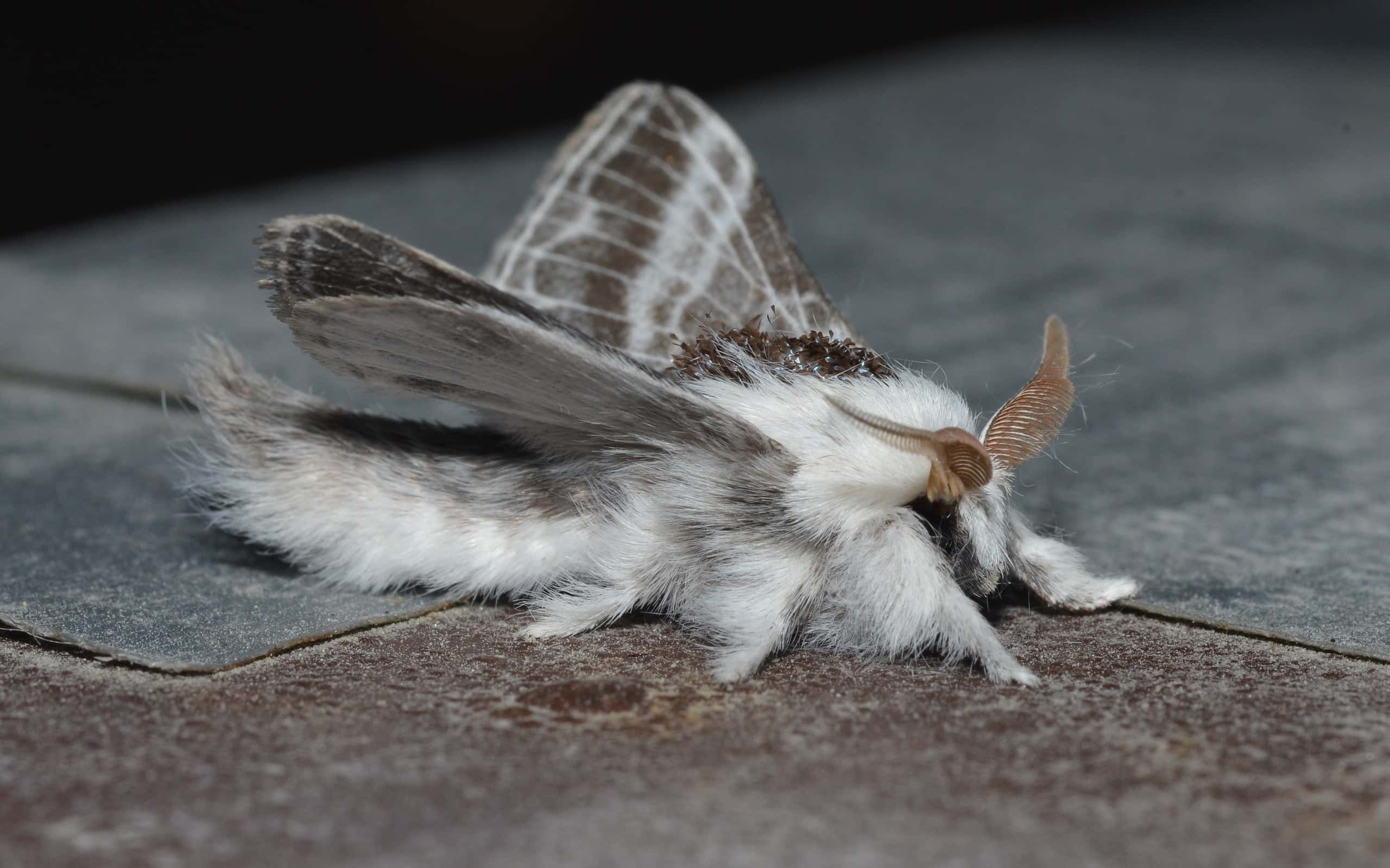We’ve all seen a group of bugs swarming around a porch light on a late summer evening, but have you ever wondered, “What exactly is going on here?” It’s an excellent question. In fact, the jury was out on this one until very recently. We now have a widely accepted theory as to why this occurs in bugs. There are also several older theories that predated this new discovery. Some are surprising, and some are simpler than you’d think.
Theories about Bugs Attraction to Light

Many moths are nocturnal, seeking food at night in order to avoid their diurnal predators.
©Andy Reago & Chrissy McClarren / CC BY 2.0 – Original / License
A commonly held belief for years was that insects were mistaking artificial light sources for the moon. That’s not actually the case, although it’s easy to see why people readily accept this. We as humans used the moon as a navigational tool before we had access to electronics and GPS systems. Many sailors would use the position of the moon and stars to navigate the open sea. It’s no wonder we would assume our little bug friends are doing the same. However, what we failed to acknowledge with this theory is that it came from a very human-centric point of view.
Another popular theory was that bugs were seeing the light source as a means to escape from predators. We know that insects are hardwired to escape from danger, and who could blame them? Being so small and vulnerable makes you an easy target for other predators. Animals such as birds, squirrels, or even other insects include bugs as part of their diet. Looking for a quick escape route is usually their best course of action. People commonly believed that light sources were an easy way for an insect to identify an unblocked path. An even more interesting take on the phenomenon was that predator insects might be seeking out light sources for food. It is not uncommon for insects to predate other insects, so it’s understandable how this rumor formed. Talk about an all-you-can-eat buffet!
What’s Really Happening to the Bugs?
Luckily, we now have a good handle on what’s actually happening to cause insects to behave in this way. In a study published recently, Imperial College London and Florida International University collaborated to answer this question. Using 3D flight technology to get to the bottom of this, their findings are surprising.
For thousands of years, bugs have used the sky to help orient themselves. It’s the greatest source of light that there is. Thanks to the sun, they are easily able to tell which way is up, and which way is down. Because of this, insects display what’s called a dorsal-light-response, also known as DLR. DLR is a natural urge that insects have to attempt to orient their upper side toward the light source. This helps them navigate through the air while in active flight.

The sun indicates to insects which direction is up and which is down.
©Louis Hsu/Shutterstock.com
During the experiment, scientists placed artificial light sources around the room in different positions in order to study the insects’ flight patterns. Their reactions to different placements of the light source were incredibly revealing. When the light emanated from directly above, insects followed an orbiting pattern. This means that the insects tilted their bodies slightly toward the light source, and sustained flight occurred. However, when the light emanated from below, scientists observed an inversion response. The bugs were so committed to orienting their dorsal side toward the light, that they would willingly interrupt their flight and fall to the ground. This was tested on butterflies, dragonflies, and moths, and similar results were found.
Outlook for the Future
So, what does this all mean? In addition to satisfying inquiring minds, there has been a long debate regarding artificial light sources and their effect on insect welfare. City planners can take the findings from this study into consideration when implementing large-scale outdoor light sources. If we can bring this research into common knowledge, it may be able to improve certain insect populations. Conservation is on everyone’s mind right now — we’re going through the Holocene extinction, so any help to slow it is welcome.
Above all else, this kind of research is important because it helps us reflect on how different the natural world can be from ours. We would do well to help out our animal friends, even if they’re as small as bugs. Our understanding, even in today’s age, is still limited. Each day, new discoveries are made. It’s exciting and inspiring knowing that we can help build a better future by asking silly questions just like, “Why is that moth banging its head into my lamp?!”
Thank you for reading! Have some feedback for us? Contact the AZ Animals editorial team.








